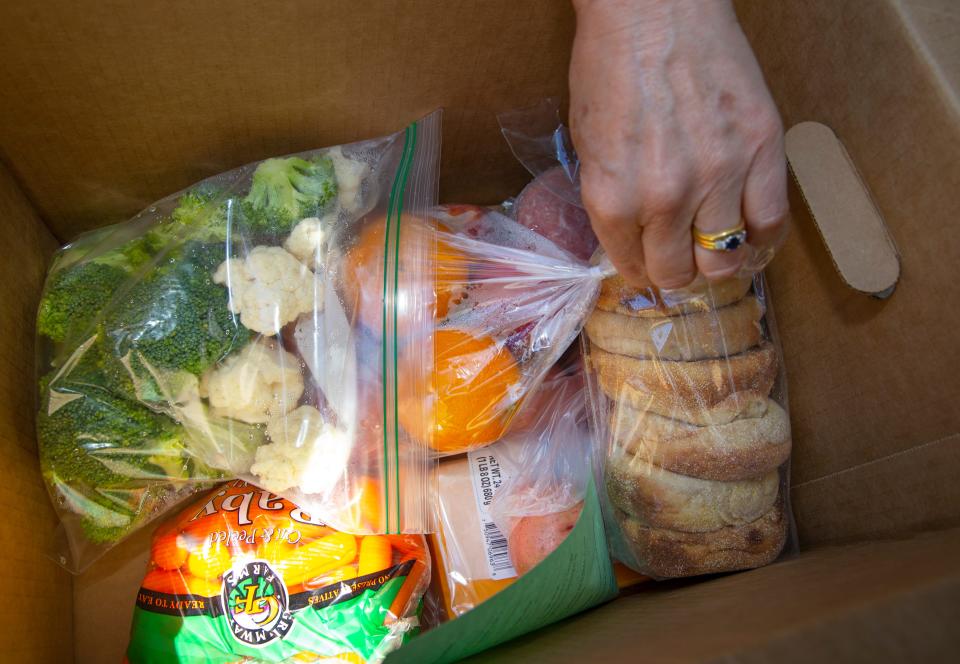44% of Oregon families don't earn enough to cover bills: 4 things to know

Nearly half of Oregon households are unable to afford the basics, according to a new report from United Ways of the Pacific Northwest and United for ALICE.
The report looked at data from 2021 and revealed that 744,895 households, 44%, were either in poverty or defined as ALICE, which stands for Asset Limited, Income Constrained, Employed. ALICE households earn above the Federal Poverty Level and often do not qualify for public assistance but cannot afford the basic cost of living in their county.
The number of financially insecure households in Oregon grew by 42,000 during the first two years of the pandemic, rising by 6% between 2019 and 2021.
While job disruptions and inflation caused a lot of financial hardship, a combination of pandemic supports and rising wages helped to blunt what could have been a deeper financial crisis, the report found.
As some benefits fall away and inflation persists, the report warns of greater financial stress in the future.
“With COVID-19 supports all but gone, we know things may be much worse on the ground in many communities than seen in this 2021 spotlight," Jim Cooper, president and CEO of United Ways of the Pacific Northwest, said in a news release. "We must be diligent to not let our neighbors continue to fall through the cracks, or the costs to society will be much greater."
Here are four takeaways from the 30-page report:
1. A family of four needed $73,380 to get by in Oregon in 2021
While the federal poverty threshold was an annual total of $26,500 for a family of four in 2021, it cost $73,380, or $6,115 monthly, to afford the essentials needed to live and work in the modern economy in Oregon.
The Child Tax Credit and Child Dependent Care Tax Credit helped to soften the blow, bringing the budget down from $88,152.
The report's estimated 'survival budget" is estimated to be the minimum average income a household needs to afford housing, child care, food, transportation, health care and a smartphone plan, plus taxes.
The poverty threshold for a single adult is $12,880 annually, but the ALICE Houshold Survival Budget is $27,324.
While the poverty threshold went up by 3% from 2019 to 2021, household expenses went up by 13% for a family of four and 15% for a single adult.
2. Oregon households are food insecure
Rates of food insufficiency have remained elevated since the beginning of the pandemic.
In an August 2020 survey, respondents living below the ALICE Threshold in Oregon were far more likely to report that their household sometimes or often did not have enough food in the prior seven days than respondents above the threshold (15% vs. 3%).
Rates remained relatively flat through November 2022 (16% and 2%).
3. 64% of Black households were below the ALICE Threshold
There are households below the ALICE Threshold across all demographic groups. However, the report found disparities in the rates of financial hardship due to issues such as racism, ageism, gender discrimination and geographic barriers that limit many families’ access to resources and opportunities for financial stability.
For example, 54% of Hispanic, 56% of American Indian and Alaska Native, and 64% of Black households were below the ALICE Threshold in Oregon in 2021, compared with 40% of Asian and 42% of White households.
4. In certain counties, more residents suffer
Statewide, 44% of households in 2021 were under the ALICE threshold. But in Lane County, the numbers were at 46%. Lane County’s percentage has gone up by 8% since 2019 and the number of households under the threshold grew by 3%.
In Marion County, the percentage was 43%. Marion County’s percentage went up by 5% since 2019 and the number of households grew by 3%.
In Polk County, 39% of residents lived below the ALICE threshold in 2021, 1% less than 2019 and the number of households grew by 10%.
Counties with a notably higher percentage of households below the ALICE threshold include Harney (63%), Malheur (57%) and Josephine (55%).
Contact reporter Tatiana Parafiniuk-Talesnick at Tatiana@registerguard.com or 541-521-7512, and follow her on Twitter @TatianaSophiaPT.
This article originally appeared on Register-Guard: Report says nearly half of Oregon households struggle to afford basics

 money
money 